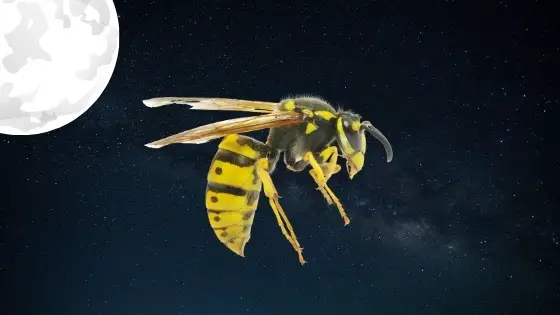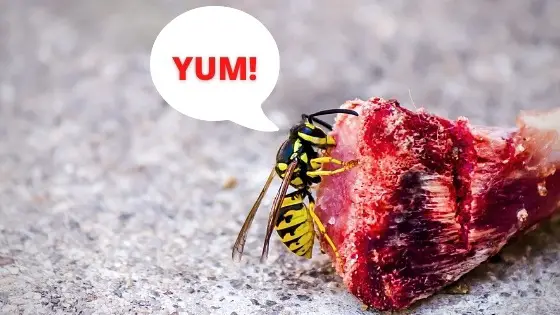Paper Wasp Nest Identification: Everything You Need to Know About Paper Wasp Nests

Paper wasps are considered vespid wasps that form their nests from pulp that they make out of wood fibers and plants. They are often called umbrella wasps due to the look of their nest. It has an upside-down umbrella shape that will hang down from different areas of your home. While usually pretty mild-mannered when you leave them alone, paper wasps can sting. They will do so if they feel you are a threat to them.
Do you know how to spot paper wasps, and do you know the best way to get rid of their nest? It’s important to know what you’re dealing with, so you can take the appropriate steps towards getting rid of an insect infestation.
How to Identify a Paper Wasp Nest
The paper wasp is a species of wasp that makes its nest by gathering fibers from plant stems and dead wood. When they mix these fibers with their saliva, they can create elaborate nests that look brown or gray in color.
Inside of the nest, you will find several compartments used for housing wasp eggs and the larvae as they grow and develop. They are usually hanging from areas like the eaves of your home, door frames, or windows. Intricately made, these nests will have fragile cones formed together in an umbrella-shaped structure.
When Do Paper Wasps Leave Their Nests?
Paper wasps spend their nights inside of their nests. Once the sun comes up and the temperature outside is rising, they will leave the nest for the day. They will return throughout the day to feed and care for their young. When the temperature outside is below fifty degrees, paper wasps become very sleepy and inactive. They tend to stay inside of their nests more during this kind of weather.
What is the Paper Wasp Lifecycle?
Paper wasps are a colony of insects that contain 3 different castes: queens, workers, and males. In the spring queens will select a nesting site and begin building a nest. Eggs will be laid into each individual cell of the nest, and the cell will be left open until a larvae begins to pupate.
During this life cycle, worker wasps assist with feeding the young as well as building and defending the nest. In the summer, the queen will stop laying eggs and the colony will begin to decline.
Paper Wasps Nests in the Winter
Paper wasps nests don’t provide excellent shelter in the winter in most cases. It’s pretty typical for the queen to be the only one to survive a long winter. Because food and supplies are short in the winter, this isn’t a time of year when you need to worry about nests forming or growing. It’s still a good idea to clean up any paper wasps nests that you find in the winter, so they are gone come spring.
Paper Wasp Nest vs. Yellow Jacket Nest
There are many similarities between a paper wasp and a yellow jacket, but there are some distinct differences in spotting one of their nests. A paper wasp nest will be a cone-like structure that hangs upside-down. It’s always located above ground as well. A yellow jacket nest will be found a little more discreetly underground or in a hollowed-out structure of some sort. The yellow jacket nest is much more elaborate with different compartments, layers, and cells.
How do Paper Wasps Get into Attics & Why?
Paper wasps don’t have to work too hard to get into your attic, unfortunately. There are usually several openings that exist around your eaves, vents, shingles, and gutters. This is typically the contractor’s fault that built your home, and gaps will open up as time goes on and your home settles more and more. Because paper wasps are trying to find the safest and most comfortable location to start building their nest, you may find them in your attic. It’s merely a location away from the elements where they can thrive.
How to Get Rid of Paper Wasp Nests
If you find a paper wasp nest during the day, it’s better to come back in the evening hours to get rid of the nest and the colony. When you have more wasps that have come back to the nest after sunset, you’ll be able to remove more of them at once. The nest’s structure is relatively thin, so you can use a variety of products to saturate the nest and kill the wasps. Insecticides that are effective for paper wasps can be used.
There are also wasp freeze kits that will freeze the wasps, eggs, and larvae on contact. You can turn to natural methods like peppermint oil and tea tree oil if you want to be more careful about the products you’re using.
If you find a paper wasp nest in your home or on your property somewhere, it’s essential that you take care of it. The nest itself doesn’t have much strength when you touch it, so you can spray it or physically remove it. Just make sure that you’re taking proper safety precautions.
While paper wasps don’t randomly sting humans, they will come after you if they feel you are threatening their life or their nest. If you’re concerned with your safety, a professional can quickly and effectively rid your property and home of paper wasps.



